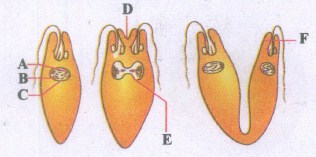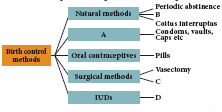- State Board
-
12th Standard
-

Biology
-

Computer Applications
-

Computer Science
-

Business Maths and Statistics
-

Commerce
-

Economics
-

Maths
-

Chemistry
-

Physics
-

Computer Technology
-

History
-

Accountancy
-

Tamil
-

Maths
-

Chemistry
-

Physics
-

Biology
-

Computer Science
-

Business Maths and Statistics
-

Economics
-

Commerce
-

Accountancy
-

History
-

Computer Applications
-

Computer Technology
-

English
12th Standard stateboard question papers & Study material
தமிழ் Subjects
English Subjects
-
-
11th Standard
-

Maths
-

Biology
-

உயிரியல் - தாவரவியல்
-

Economics
-

Physics
-

Chemistry
-

History
-

Business Maths and Statistics
-

Computer Science
-

Accountancy
-

Commerce
-

Computer Applications
-

Computer Technology
-

Tamil
-

Maths
-

Commerce
-

Economics
-

Biology
-

Business Maths and Statistics
-

Accountancy
-

Computer Science
-

Physics
-

Chemistry
-

Computer Applications
-

History
-

Computer Technology
-

Tamil
-

English
11th Standard stateboard question papers & Study material
தமிழ் Subjects
English Subjects
-
-
9th Standard
-

-

-

-

-

-

-

Maths
-

Science
-

Social Science
-

Maths
-

Science
-

Social Science
9th Standard stateboard question papers & Study material
தமிழ் Subjects
English Subjects
-
-
6th Standard
-

Maths
-

Science
-

Social Science
-

Maths
-

Science
-

Social Science
6th Standard stateboard question papers & Study material
தமிழ் Subjects
English Subjects
-
-
10th Standard
-

Maths
-

Science
-

Social Science
-

Tamil
-

Maths
-

Science
-

Social Science
-

English
-

English
10th Standard stateboard question papers & Study material
தமிழ் Subjects
English Subjects
-
-
7th Standard
-

Maths
-

Science
-

Maths
-

Science
-

Social Science
7th Standard stateboard question papers & Study material
தமிழ் Subjects
English Subjects
-
-
8th Standard
-

கணிதம் - old
-

Science
-

Social Science
-

கணிதம்
-

Maths
-

Science
-

Social Science
8th Standard stateboard question papers & Study material
தமிழ் Subjects
English Subjects
-
-
12th Standard
- CBSE Board
-
12th Standard CBSE
-

Biology
-

Physics
-

Chemistry
-

Maths
-

Accountancy
-

Introductory Micro and Macroeconomics
-

Business Studies
-

Economics
-

Computer Science
-

Geography
-

English
-

History
-

Indian Society
-

Physical Education
-

Sociology
-

Tamil
-

Bio Technology
-

Engineering Graphics
-

Entrepreneurship
-

Hindi Core
-

Hindi Elective
-

Home Science
-

Legal Studies
-

Political Science
-

Psychology
12th Standard CBSE Subject Question Paper & Study Material
-
-
11th Standard CBSE
-

Mathematics
-

Chemistry
-

Biology
-

Physics
-

Business Studies
-

Accountancy
-

Economics
-

Computer Science
-

Bio Technology
-

English
-

Enterprenership
-

Geography
-

Hindi
-

History
-

Home Science
-

Physical Education
-

Political Science
-

Psychology
-

Sociology
-

Applied Mathematics
11th Standard CBSE Subject Question Paper & Study Material
-
- 10th Standard CBSE
-
9th Standard CBSE
-

Mathematics
-

Social Science
-

Science
-

English
-

Hindi
9th Standard CBSE Subject Question Paper & Study Material
-
-
8th Standard CBSE
-

Science
-

Social Science
-

Mathematics
-

English
8th Standard CBSE Subject Question Paper & Study Material
-
-
7th Standard CBSE
-

Mathematics
-

Science
-

Social Science
-

English
7th Standard CBSE Subject Question Paper & Study Material
-
-
6th Standard CBSE
-

Mathematics
-

Science
-

Social Science
-

English
6th Standard CBSE Subject Question Paper & Study Material
-
-
12th Standard CBSE
- Free Online Test
- News
- Study Materials
-
Students
-

Stateboard Tamil Nadu
-

CBSE Board
-

Free Online Tests
-

Educational News
-

Scholarships
-

Entrance Exams India
-

Video Materials
Study Materials , News and Scholarships
-
-
Students

12th Standard Biology English Medium All Chapter Book Back and Creative Two Mark Questions 2020 Question Bank Software Mar-09 , 2020
12th Standard Biology English Medium All Chapter Book Back and Creative Two Mark Questions 2020
All Chapter 2 Marks
12th Standard
-
Reg.No. :
Biology
Time :
03:00:00 Hrs
Total Marks :
184
-
Name an organism where cell division is itself a mode of reproduction.
-
Name the phenomenon where the female gamete directly develops into a new organism with an avian example.
-
Identify the parts marked as A, B, C, D, E and F for the below diagram.

-
Define Vivipary.
-
Mention the differences between spermiogenesis and spermatogenesis
-
Placenta is an endocrine tissue. Justify
-
Name the types of cells found in seminiferous tubule.
-
What is "Let - Down" reflex?
-
Select the correct term from the bracket and complete the given branching tree

(Barriers, Lactational amenorrhoea, CuT, Tubectomy) -
Correct the following statements
a) Transfer of an ovum collected from donor into the fallopian tube is called ZIFT.
b) Transfering of an embryo with more than 8 blastomeres into uterus is called GIFT.
c) Multiload 375 is a hormone releasing IUD. -
What is Saheli?
-
What do you mean by the term - coitus interruptus?
-
What is Lyonisation?
-
What is criss-cross inheritance?
-
State the allelic forms of I gene and mention its chromosomal location.
-
Name any four organism expressing ZW-ZZ type of sex determination.
-
Differentiate - Leading stand and lagging strand
-
Mention any two ways in which single nucleotide polymorphism (SNPs) identified in human genome can bring revolutionary change in biological and medical science.
-
Distinguish heterochromatin and euchromatin.
-
Differentiate nucleoside from nucleotide.
-
Explain the three major categories in which fossilization occur?
-
Explain how mutations, natural selection and genetic drift affect Hardy Weinberg equilibrium.
-
Wing of a cockroach and the wing of parrot. What do you infer from this statement with reference to evolution?
-
Name one fossilised connecting link between reptiles and Aves also one living connecting link between Annelida and Arthropoda
-
Given below are some human organs. Identify one primary and one secondary lymphoid organ. Explain its role. Liver, thymus, stomach, thyroid, tonsils.
-
What are interferons? Mention their role.
-
What is haemozoin?
-
Name any 4 natural cannabinoids
-
How is milk converted into curd? Explain the process of curd formation
-
What is biological oxygen demand?
-
Name any four antibiotics
-
Rhizobium is a bacteria but acts as bio-fertilization. How?
-
Explain how “Rosie” is different from a normal cow
-
How was Insulin obtained before the advent of rDNA technology? What were the problems encountered?
-
What is annealing?
-
What is GI?
-
Define ecological niche.
-
Explain hibernation and aestivation with examples.
-
What is ecosphere?
-
How natality and mortality can be calculated?
-
What are the three levels of biodiversity?
-
Why do animals have greater diversification than plant diversity?
-
What does IUCN stand for?
-
State the mission of IUCN.
-
Discuss the causes and effects of global warming. What measures need to be taken to control global warming?
-
What would Earth be like without the greenhouse effect?
-
What is 4 'R'?
-
Expand USEPA and MOEFCC.
-
What are clones?
-
Explain the conventional methods adopted in vegetative propagation of higher plants.
-
Mention any two conventional propagation techniques
-
State the role of filiform apparatus found in embryo sac of angiosperm.
-
Name the seven contrasting traits of Mendel.
-
Define Genetics.
-
Give the proper terminologies for the following statement
(a) Single gene affecting multiple traits
(b) Single trait affected by many genes. -
Why extranuclear inheritance is called as cytoplasmic inheritance.
-
When two different genes came from same parent they tend to remain together.
i) What is the name of this phenomenon?
ii) Draw the cross with suitable example.
iii) Write the observed phenotypic ratio. -
If you cross dominant genotype PV/PV male Drosophila with double recessive female and obtain F1 hybrid. Now you cross F1 male with double recessive female.
i) What type of linkage is seen?
ii) Draw the cross with correct genotype.
iii) What is the possible genotype in F2 generation? -
Point out any four physical mutagens
-
Comment on the chromosomal condition; 2n - 2.
-
What are the materials used to grow microorganism like Spirulina?
-
What are the enzymes you can used to cut terminal end and internal phospho di ester bond of nucleotide sequence?
-
What are the benefits of Genetically Modified plants?
-
Define the terms (i) Bioventing (ii) Bioaugmentation
-
What is the name of the process given below? Write its 4 types.
-
Write the various steps involved in cell suspension culture.
-
Classify plant tissue culture based on types of explants used.
-
Point any four ways by which IPR is protected in India.
-
‘Green algae are not likely to be found in the deepest strata of the ocean’. Give at least one reason.
-
Sandy soil is not suitable for cultivation. Explain why?
-
What is ecological hierarchy?
-
Heliophytes differ from Sciophytes. How?
-
Discuss the gross primary productivity is more efficient than net primary productivity.
-
Pyramid of energy is always upright. Give reasons
-
What is standing crop?
-
What is Eltonian pyramid?
-
Give four examples of plants cultivated in commercial agroforestry.
-
Expand CCS. (or) What is CCS?
-
What is ozone layer? Why it is essential?
-
Define the term Agroforestry. Name any two major tree species cultivated in Agroforestry.
-
Differentiate between primary introduction from secondary introduction.
-
How are microbial inoculants used to increase the soil fertility?
-
Name any four plants used in Green leaf manuring
-
Define the following terms:
(a) Emasculation
(b) Bagging -
Discuss which wood is better for making furniture.
-
Name the humors that are responsible for the health of human beings.
-
Name any four millet varieties.
-
Mention any two Jute species.
-
How does immune system work?
-
What are interferons? Mention their role.
-
Define innate immunity.
-
What is the significance of bone marrow in immune system?
Answer The Following Question:
92 x 2 = 184






 12th Standard Biology Syllabus
12th Standard Biology Syllabus  12th Standard Biology Study Materials
12th Standard Biology Study Materials 12th Standard Biology MCQ Practise Tests
12th Standard Biology MCQ Practise Tests 

Reviews & Comments about 12th Standard Biology English Medium All Chapter Book Back and Creative Two Mark Questions 2020
Write your Comment